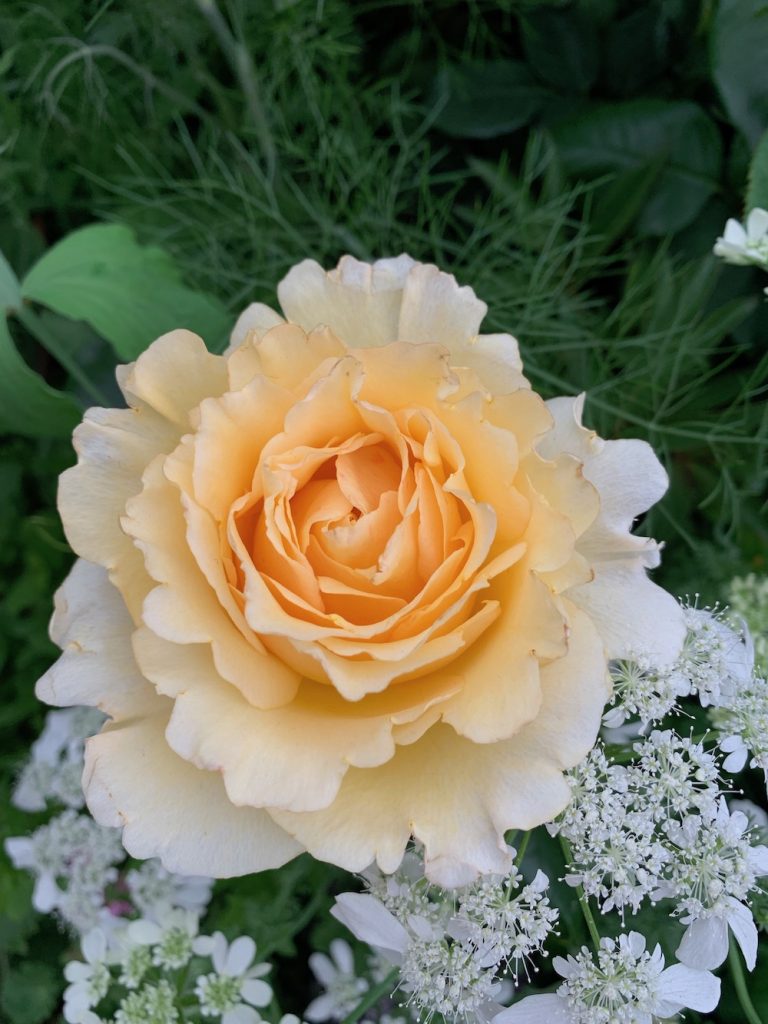Inhale! The Ten Most Fragrant Flowers for a Blissfully Scented Garden
By Sarah Melville Hodder
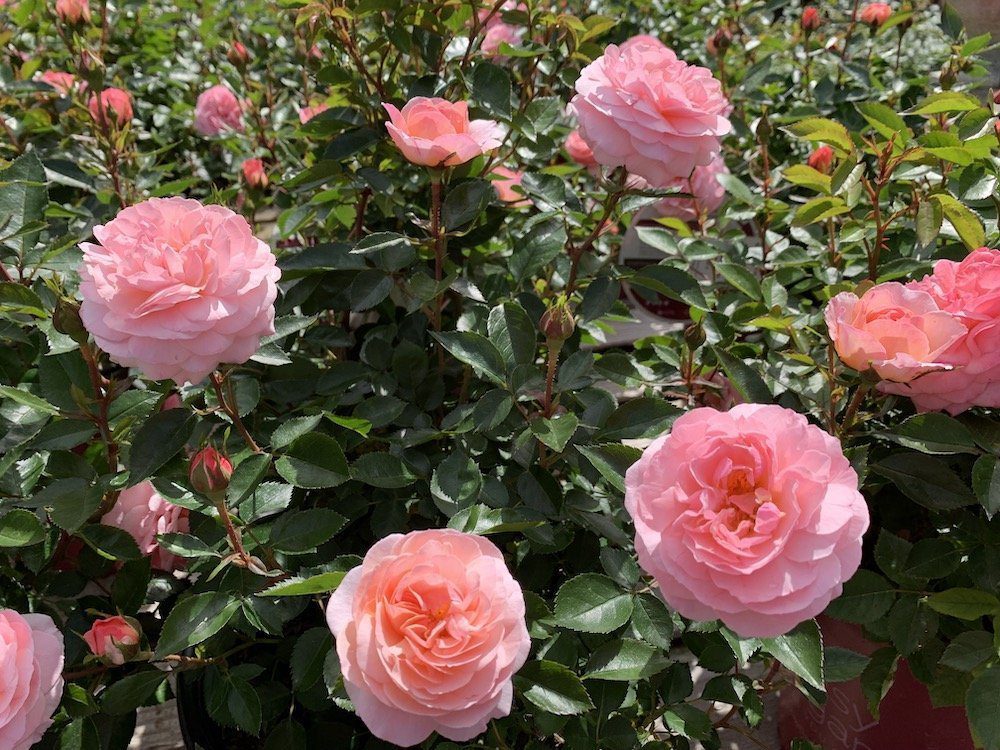
Simply put, sweet-smelling flowers make us happy!
Fragrant flowers are as diverse in size and shape as they are in scent. Some grow on trees in the tropics, or on shrubs or vines, or grow close to the earth as compact blossoming plants. Some bloom in petal clusters, others with bold individual blossoms.
Some release their sweetest scent at night, or during a summer shower, some in the earliest of spring tiptoeing in after the last frost, and still others thrive in the height of summer’s heat.
Certainly, there are also plants and flowers that, well, stink. Their foul odors are often reflected in their names – skunk cabbage, carrion flower, dracunculus vulgaris – otherwise known as stink lily.
Recommended: Queen Guitarist Brian May Rips Buttocks While Gardening
But the scent of certain flowers has the entrancing ability to transport you to a distant but distinct memory. Even the faintest floral whiff on a breeze can whisk you far, far away.
Listed below are some of the most delightfully scented flowers I know; they are easily cultivated, and most are suitable to growing zones 4 to 10.
1) The Opulent And Heady Stargazer Lily
“The tall white lilies were reeling in the moonlight, and the air was charged with perfume, as with a presence. … She touched the big, pallid flowers on their petals, then shivered. They seemed to be stretching in the moonlight. Then she drank a deep draught of the scent. It almost made her dizzy.” DH Lawrence, Sons and Lovers
Lawrence wasn’t referring to Stargazers, but had Mrs. Morel come upon those luscious lilies, she would have reacted similarly. This hybrid variety blooms exuberant dark pink flowers, whose scent is opulent and heady.
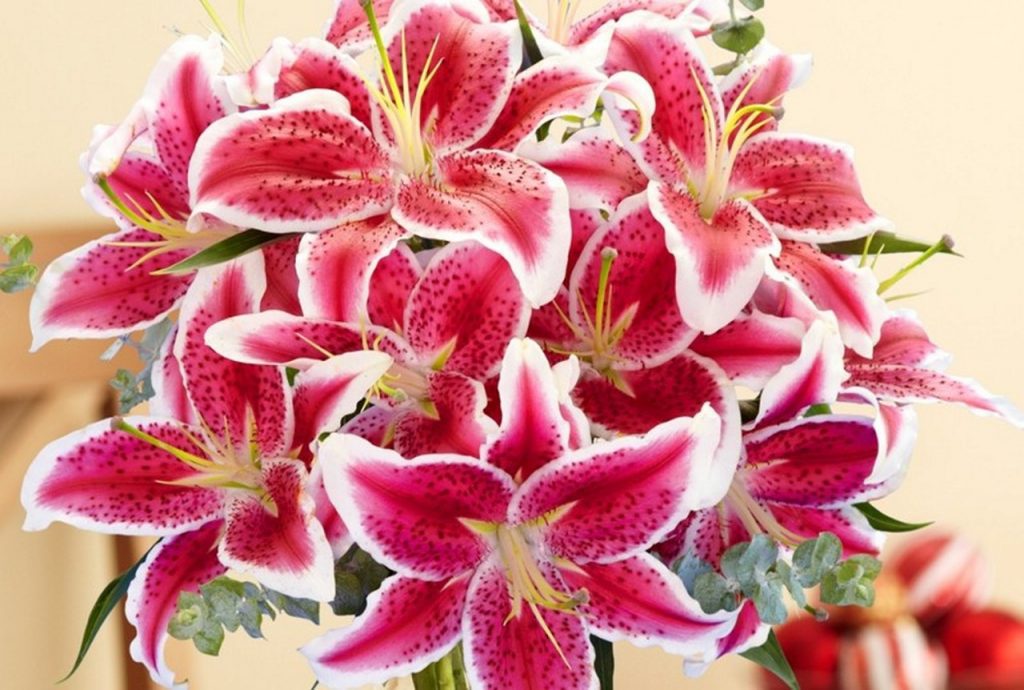
Slightly spicy but deeply sensual, the aroma can overwhelm indoors, but placed judiciously, Stargazers enhance any space. Although it is tempting to lean in and inhale the perfume, you may walk away giddy, with an orange pollen-streaked nose. Outdoors, they grow from bulbs in partial shade, zones 4-8.
Recommended: The Elusive Red Hydrangea, Myth or Reality
2) Paperwhite – Narcissus Papyraceus
Upon entering my grandmother’s enormous front hall at Christmastime, I would shut my eyes and breathe deeply. Like a pine forest in the summer rain, the house was redolent with deeply spicy, green balsam, but it was softened with the fresh sweetness of paperwhites, like a gentle welcoming smile.
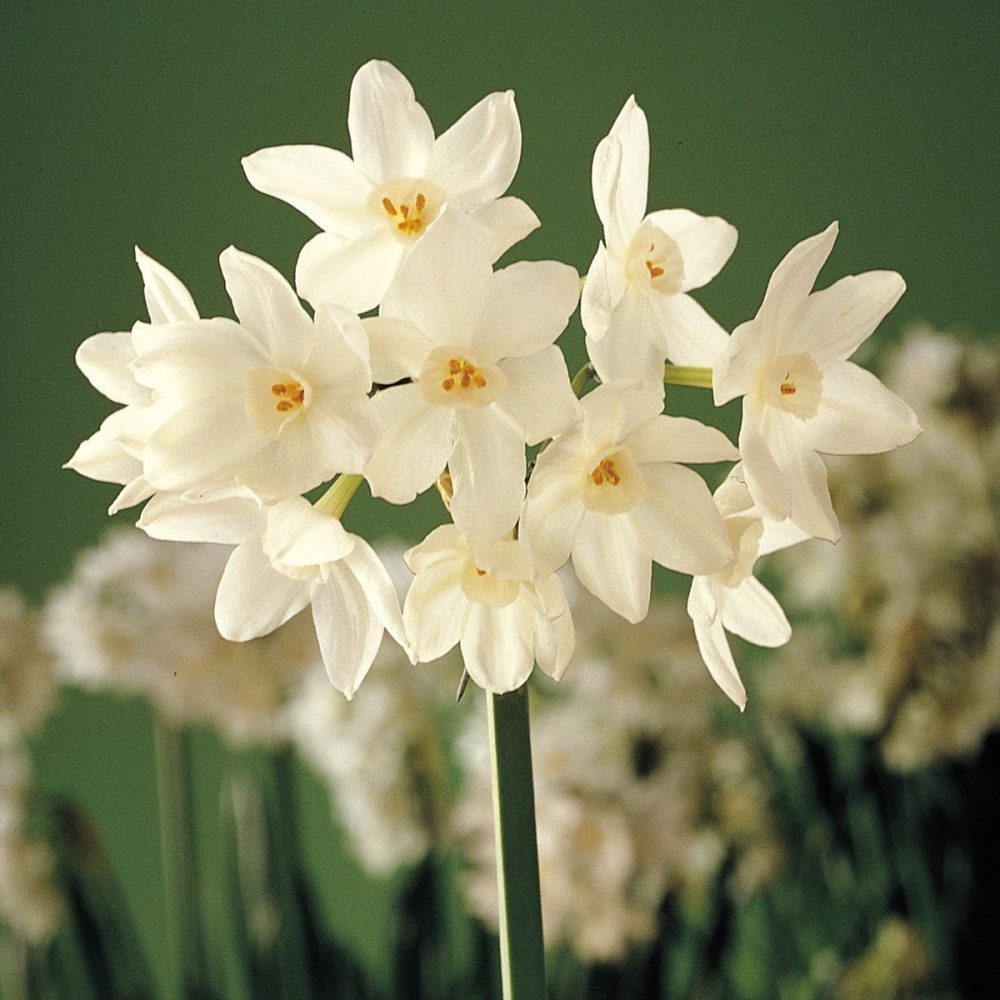
Paperwhites are native to the Mediterranean region, and the bulbs will grow outside in the warmest zones 8-10. But those in colder climes can enjoy the petite, snow-white flowers and their delicate but dreamy aroma by forcing bulbs indoors, in bowls of pebbles.
3) The Colorful Scented Primrose – Primula
The Primrose opens wide in spring;
Her scent is sweet and good:
It smells of every happy thing
In sunny lane and wood.
— Cicely Mary Barker, The Primrose Fairy
This compact but colorful plant is beloved throughout Europe and the British Isles. It is the flower of fairies, of the Norse goddess Freya, and the foliage stuff of many legends and lore.

And it smells like spring; cool but sunny, sweet but slightly tangy like an orange lollipop. When taking your evening constitutional on a breezy and brisk day in late March, the waft of fruity fragrance from the first primroses smell of hope and the sweet promise of spring. They are easy to grow and maintain, in varied conditions, from wet to dry and sun to shade. Most varieties prefer cooler climates, in zones 4-8, but there are more than 400 species, one for everyone and everywhere. (The evening primrose is a different variety; its night-time scent is glorious.)
Recommended: Lily of the Valley, the Flower for May, Symbolizes a Return to Happiness
4) The Gentle Citrusy Mock Orange
… And the scent of mock orange
drifts through the window.
How can I rest?
How can I be content
when there is still
that odor in the world?
—Louise Glück, from Mock Orange
This shrub blooms in late spring and early summer with tender white flowers whose centers resemble a scattering of tiny sunbeams.
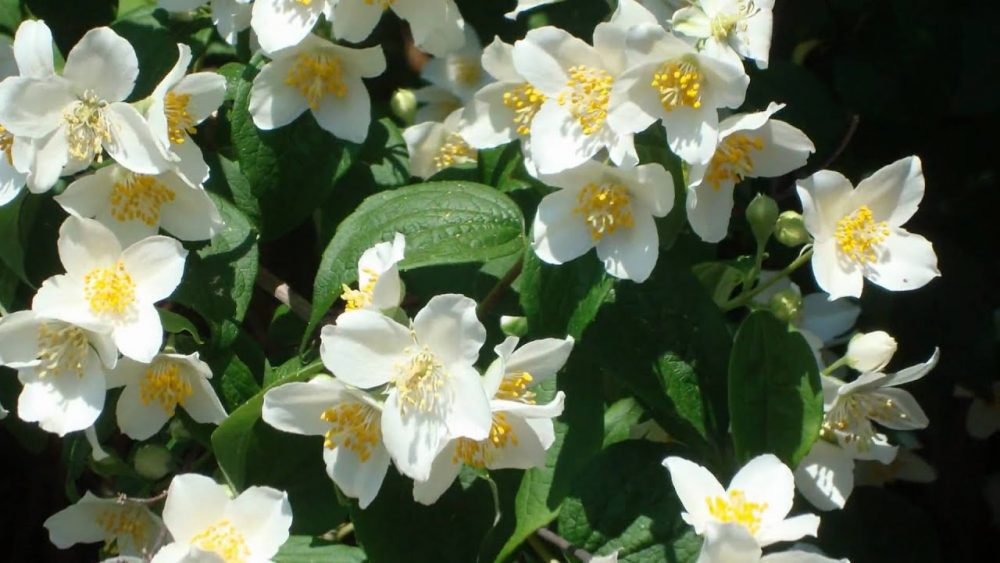
The blossoms release a cool, citrus smell that is gentle but refreshing. You can cut the flowers and enjoy their elegant fragrance inside. Plant the shrubs as a glorious hedge, or as a stand-alone plant. They grow well in zones 4-7.
5) The Creamy Clove-Like Viburnum
“A garden without a viburnum is akin to life without music and art.”
—Michael Dirr, Manual of Woody Landscape Plants
Dirr is a renowned horticulturalist whose love for the viburnum is shared by everyone whose garden is graced by the plant or who has passed by such a garden, enjoying its perfume.
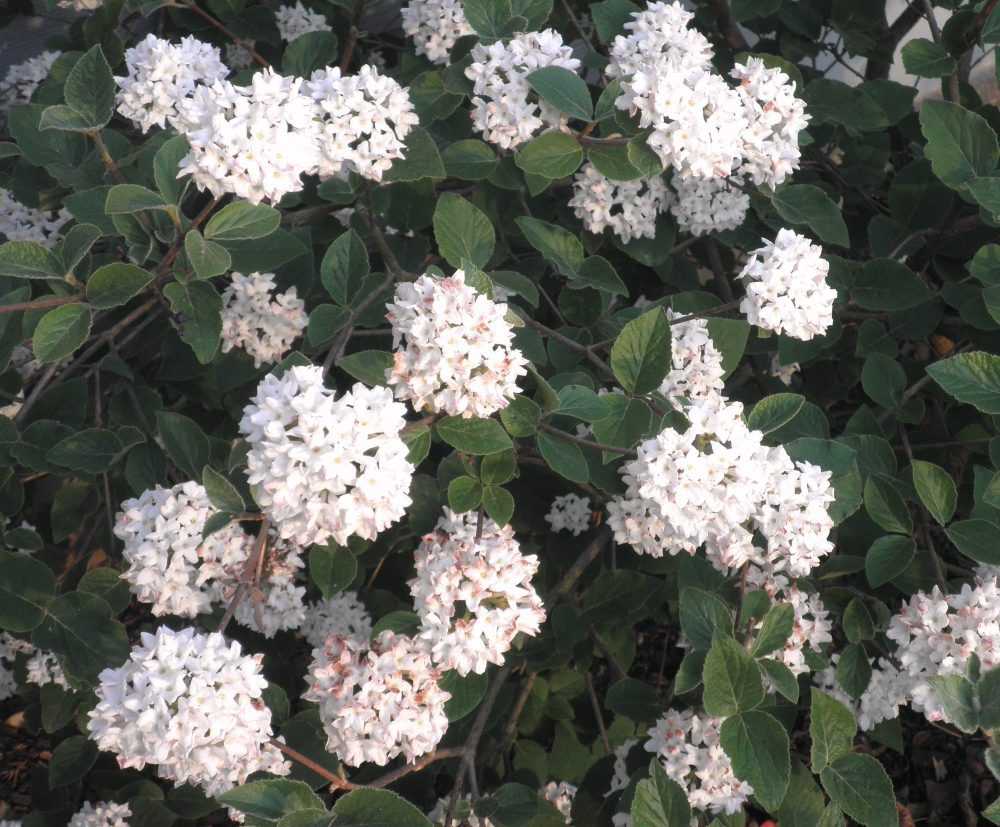
The viburnum is a large genus with more than 150 species, but the Korean spice variety is perhaps the best-loved, even if the admirer doesn’t know its name. This viburnum is a deciduous shrub, with dark pink buds that open to globe-like clusters of tiny white flowers. Their scent is succulent yet aristocratic, a creamy, clove-like aroma. The flowers emanate a distinct but unpretentious aroma, like sweet iced tea with lemon. Dirr also says: “They comport themselves with understated dignity.” What more could be said, or desired?
6) The Warm Sugary Honeysuckle
“They lay on their heathery beds and listened to all the sounds of the night. …They smelt the drifting scent of honeysuckle, and the delicious smell of wild thyme crushed under their bodies. A reed-warbler sang a beautiful little song in the reeds below, and then another answered.”
― Enid Blyton, The Secret Island
The fragrance of honeysuckle evokes a barefooted walk on a sultry afternoon, returning from the beach, salty and sunburned and utterly content.

The vine gracefully consumes the arbored gate beside the lane, and it exhales lemonade and sugar cookies. Honeysuckle loves the warmth, thrives just about anywhere and can grow to great heights. The clustered fruity flowers look like tiny, hanging lanterns with long, droopy stamens. They smell of summer and of happiness.
7) The Sweet Pure Lily of the Valley
Where scattered wild the Lily of the Vale
Its balmy essence breathes.
— James Thomson The Seasons. Spring.
Described as modest, tremulous and meek, the lily of the valley’s tiny bell-like blossoms may well deserve those descriptors. But the flower’s scent can only be called perfection. It is a snowflake, a spoonful of vanilla ice cream, a baby’s smile – sweet and pure and irresistible. For her wedding to Prince Rainier III of Monaco, Grace Kelly carried a bouquet of Lilies of the Valley…
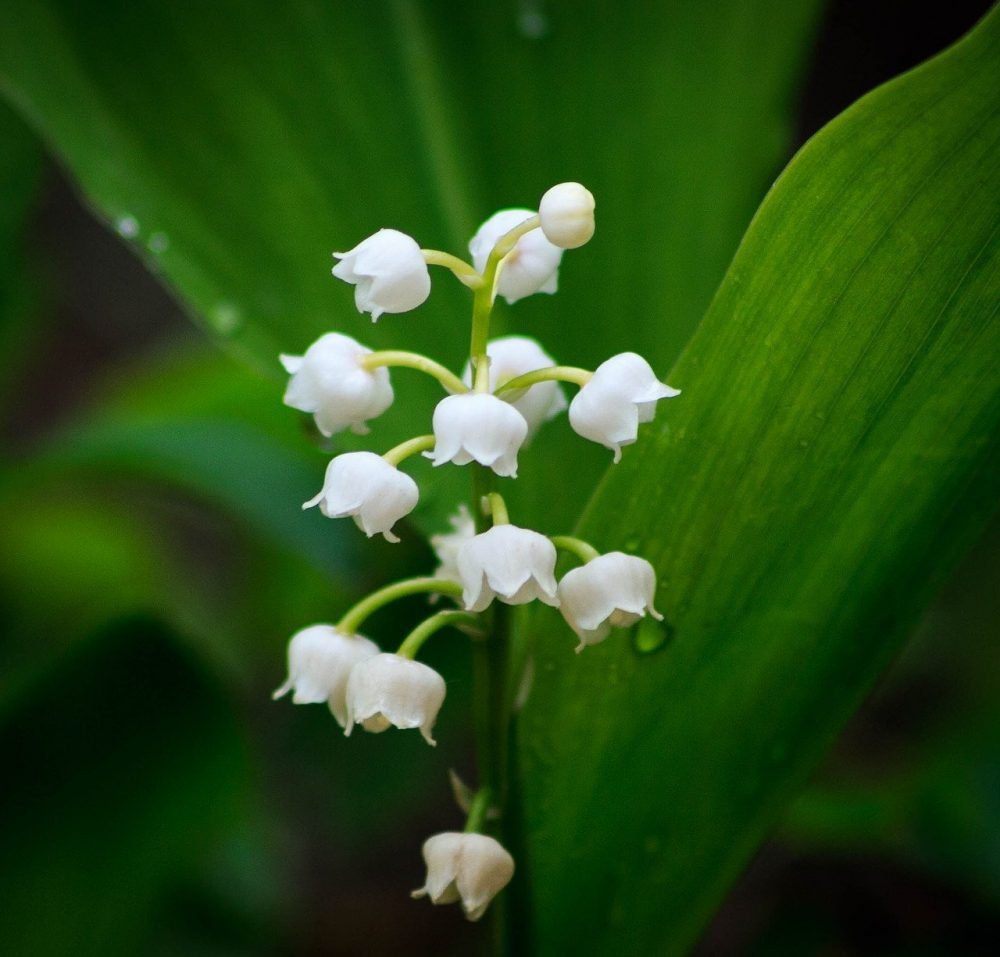
The flower was Christian Dior’s favorite (his coffin was blanketed with them) so French master perfumer, Edmond Roudnitska, created Diorissimo in 1956. Lilies of the Valley carpeted Roudnitska’s garden in Grasse, France, inspiring the iconic perfume. Also known as May bells, May lily, muguet, Mary’s tears, the perennial plant normally grows in wild, woodland settings and in cooler, temperate regions. In gardens, the flower grows for several weeks from early to mid-spring in zones 2-9. Note: Although the flower looks and smells like the essence of innocence, it is extremely poisonous.
8) The Exotic and Elegant Freesia
“Reverence and joy brought delicate peace, which surrounded her like the perfume of the flowers themselves. The happiness of that afternoon was already fixed in her mind, and always would the scent of freesia recall it to her mental sight …”
— Hugh De Sélincourt, The Way Things Happen
A bouquet of freesias is so full of color and grace it resembles the gathering of fairies in The Sleeping Beauty ballet. Freesias are exotic and elegant flowers with a long, graceful stem that bears six to eight horn-shaped blossoms. The stem curves like the neck of a dancer so the flowers face the sky.
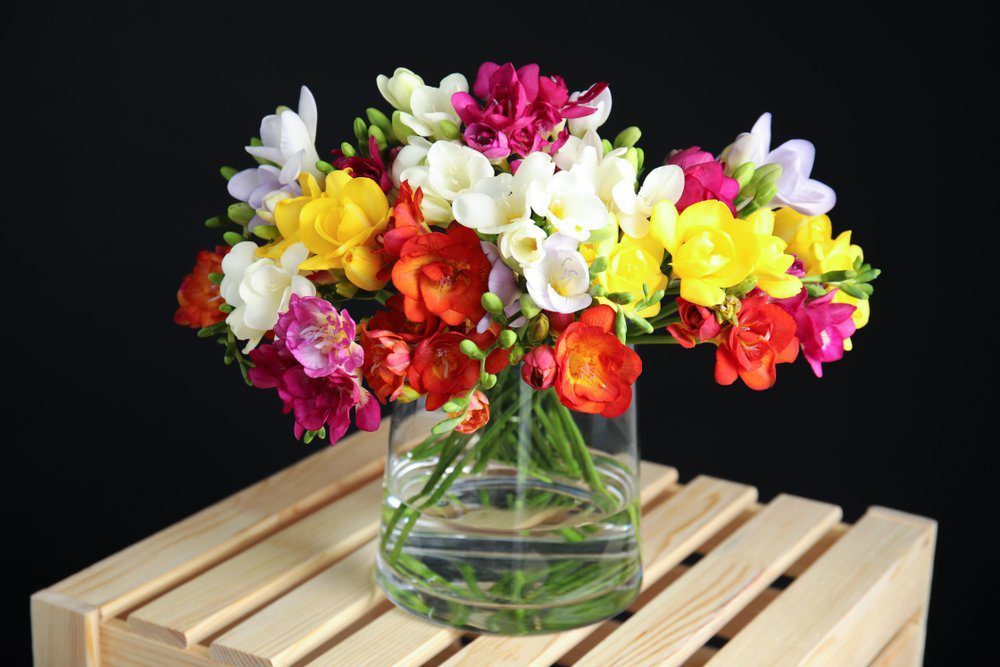
Freesias come in a wide variety of colors, bold and soft alike. And they smell delicious! Although just about everyone would agree that their scent is lovely, few agree on just how freesias smell. The blossoms are said to emit hints of honey, mint and strawberry. (They have even been described as smelling like Froot Loops cereal…)
Some think freesias’ perfume is soapy and powdery, others woody and citrusy, sunny and peppery. To me they smell like an enchanting, highly aromatic Gewürztraminer. And best, they have a long vase-life. Most of the 14 species of freesia originate in South Africa, but they are winter-hardy in growing zones 9-10. In colder zones they can be grown as annuals with the bulbs planted in the spring.
9) The Sweet Violet – Viola Odorata
“She did not answer. From her feet the ground sloped sharply into view, and violets ran down in rivulets and streams and cataracts, irrigating the hillside with blue, eddying round the tree stems, collecting into pools in the hollows, covering the grass with spots of azure foam. But never again were they in such profusion; this terrace was the well-head, the primal source whence beauty gushed out to water the earth.”
—E.M. Forster, Room With a View
Seeing her there, wading in that river of sweet violets on a hillside outside Florence, George Emerson is incited to kiss Lucy Honeychurch. Although George might not fare well in the Me-too era, it was still, at least in 1908, the most romantic moment EVER.
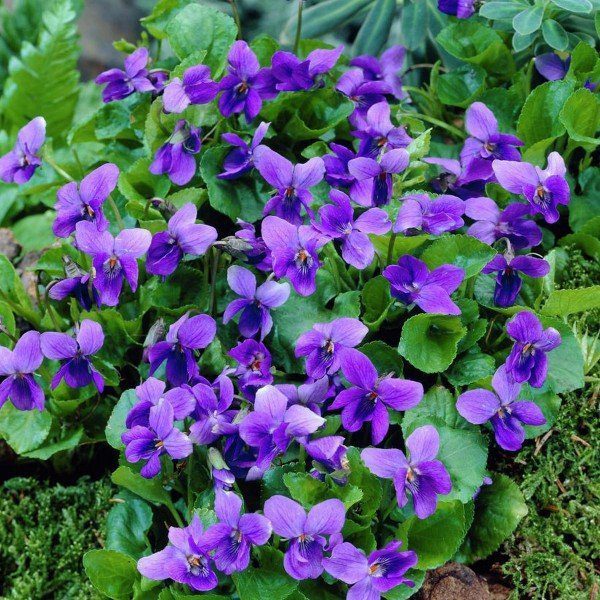
We can’t know if George was intoxicated by the intense scent of the sweet violets, but I would suspect he was. The viola odorata, or sweet violets, are modest, little plants with heart-shaped leaves and dainty, usually purple flowers. They emanate a berry-sweet fragrance.
Violets were exceedingly popular in Europe in the late 19th century, when their perfume was enjoyed in corsages, nosegays and perfumes. Although the plants are now widespread in the U.S., violets grown for cutting are rare. Most sweet violets are hardy, carpeting perennials which will grow happily in part to full shade, in the spring. They thrive in damp, well-drained ground. Grow them profusely, and then take a stroll among the scented blossoms, you never know what might happen.
10) The Velvety And Alluring Gardenia
“Like a fist if a fist could sing,” wrote poet Cornelius Eady about the white gardenias famously worn by the legendary jazz singer Billie Holiday. Gardenias are seductive and unapologetic, in their languorous sprawl of milky petals, but most especially in their fragrance.
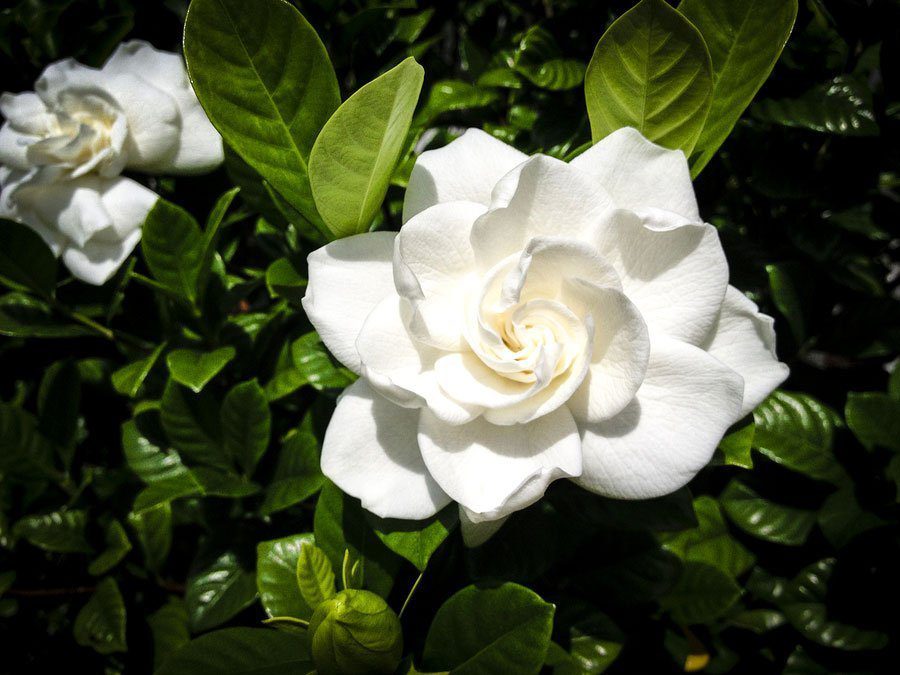
Often compared to jasmine in aroma, the gardenia scent is velvety and alluring especially on torrid, humid evenings when it floats casually through open windows, like a lullaby. The gardenia petals are too delicate for steam distillation, so, alas, no pure, essential gardenia oil exists. (There are newer methods of obtaining an “absolute” oil which involves solvent baths, not the same as essential.)
Thus, the perfume of the gardenia is much, much, much imitated, but never accurately duplicated. The flowers have therefore earned their vanity! Like willful southern heroines, gardenias are gorgeous, irresistible and a little high-maintenance. They require fertilizer and food and resent root disturbance; however, the flowers are well worth the extra TLC.
The evergreen plant originates in Asia where their bitter berry-like fruits have been used in traditional medicine for centuries. In this country, they love the humid, southern climate, although the newer, hardier varieties will survive outdoors, year-round as far north as zone 7.
Last but not least as a Bonus: The Rose
As Alice Morse Earle wrote, “The fragrance of the sweetest rose is beyond any other flower scent, it is irresistible, enthralling; you cannot leave it. I have never doubted the rose has some compelling quality not shared by other flowers. I do not know whether it comes from some inherent witchery of the plant, but it certainly exists.”
No list of fragrant flowers is complete without the rose. “Loveliness extreme,” the rose is classic, iconic and enchanting. Nevertheless, we tend to take the rose for granted – it is, after all, ubiquitous; you can buy a bunch in any supermarket. Text the word “rose” and an emoji pops up. Society has been over-rosed. But as Gertrude Stein said, “Rose is a rose is a rose is a rose,” thus we can’t let the iconic idea of the rose obscure the rose itself; it is extraordinary. Have you smelled one recently?
There is fossil evidence that roses grew in the wild 35 million years ago. Humans began cultivating the flower thousands of years ago in China, the Mediterranean and the Middle East. According to flower historians, Europe began to grow its own roses commercially in the late 18th century. Roses were so beloved and coveted the flower has served as currency, and was a key ingredient in all kinds of medicine. (According to the Herbal Encyclopedia, in the 1st century CE, Pliny the Elder recorded thirty-two different medicinal uses of the rose.)
In the U.S. in particular, roses are in such demand – a dozen, the Valentine’s Day gift de rigeur – that growers were breeding them for appearance, longevity and affordability. Because of chemicals and refrigeration, their scent was practically undetectable.
Thankfully, the rose aroma has been revived. British rose breeder David Austin is largely credited for restoring fragrance to the rose. Thanks to Austin, and now his son, we can choose from many dozens of fabulously fragrant varieties, that are also aesthetically breathtaking and repeat flowerers.
With more than 150 species and thousands of hybrids available, you can choose a rose in nearly any color and shape, and now, fragrance. If you have trouble choosing, the American Rose Society has been around since 1892 and is a good source of information. You may even find a rose society in your own town. Or just go to a florist and ask for their most fragrant variety.
Enjoy the above suggestions. Fragrant flowers not only inspire memories but can also evoke profoundly positive feelings, often simultaneously. Our olfactory receptors stimulate the part of our brains believed to create emotions. Simply, sweet-smelling flowers make us happy!

